My Travel Photography Gear | What’s in my Bag
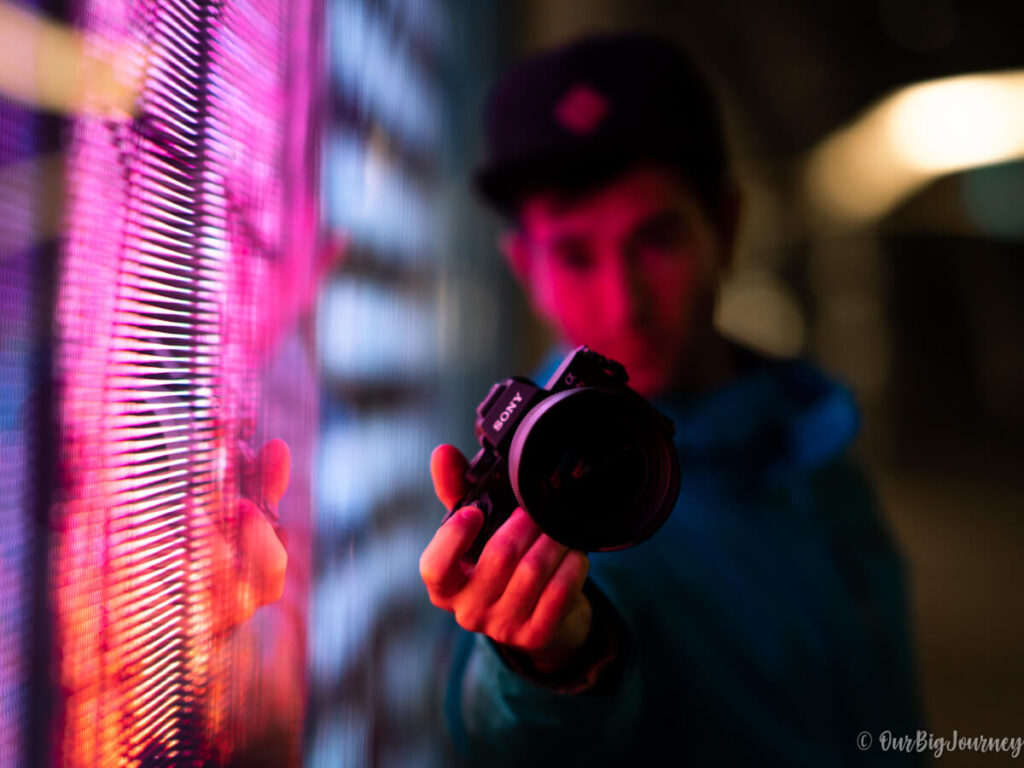
By Roberto – (Updated Feb 2025)
⏱9 min
This post contains affiliate links to the products reviewed. As an Amazon Associate, we earn from qualifying purchases.
Table of Contents
My current photography gear
In this post, you can find a brief description of my current travel photography gear, including cameras, lenses, bags, and other gadgets that travel with me. I’ve had other cameras and equipment before, but I will keep my travel photography gear always up-to-date here.
A professional Spanish photographer once said in a class: “The perfect gear doesn’t exist, because every photographer has different needs.” What do you want to do with your camera? Do you want to carry lightweight gear for a 3-day hike? Do you want a small camera for street photography? Or on the contrary, do you want the very best gear without caring about size and weight? For my travel photography gear I aim to balance weight, quality, and price.
My Camera and Lenses for travel photography gear
Main Camera – Sony A7RII
This camera (here on Amazon) is my all-around partner since 2019. This small beast can compete in quality versus other more expensive full-frame options from Canon or Nikon. It has 42.4 MP, which is ideal if you are taking landscape photos. One of the best characteristics is the quality of the sensor. 6 years after its launch, it still ranks in the Top of best sensors by DxOmark. The dynamic range is impressive and it also comes with 399 AF points, face detection mode, and 5-axis stabilization.
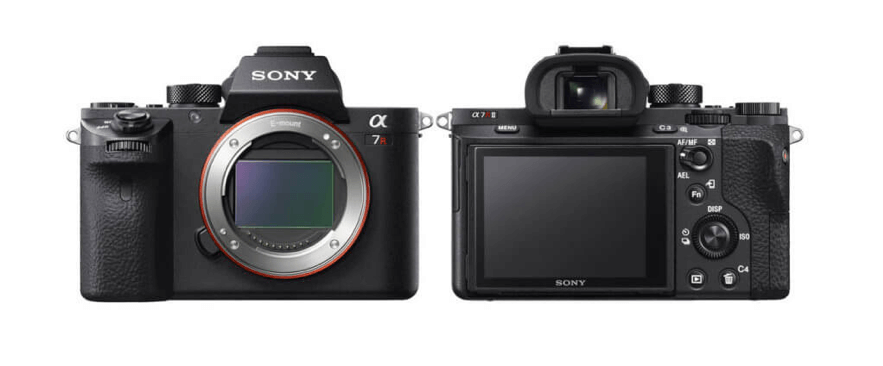
This mirrorless camera only weighs 625g (battery included) and feels great in your hands. Both the viewfinder and screen have significant improvements from previous models. You can get used to it in some days, even if you’ve never tried an electronic viewfinder before. Promise.
About the cost, thanks to the new models A7RIII, RIV, (and just recently the RV!) it has been reduced to approx. $1,400. You can find it even cheaper under some promotions. For more specs, you can click here.
 Excellent quality 42 MP sensor Excellent quality 42 MP sensor | 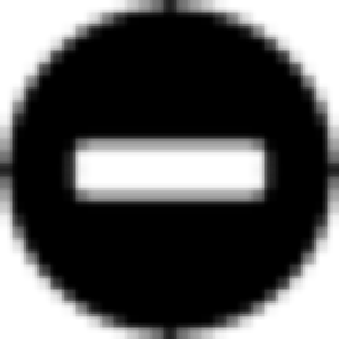 Weird menus Weird menus |
 4K video 4K video |  A tilting (but not articulated) screen A tilting (but not articulated) screen |
 Variety of objectives Variety of objectives | |
 Internal digital apps Internal digital apps | |
 Image Stabilisation Image Stabilisation | |
 Excellent quality/cost Excellent quality/cost |
Tripod – Ulanzi & COMAN Zero-Y Carbon Fiber
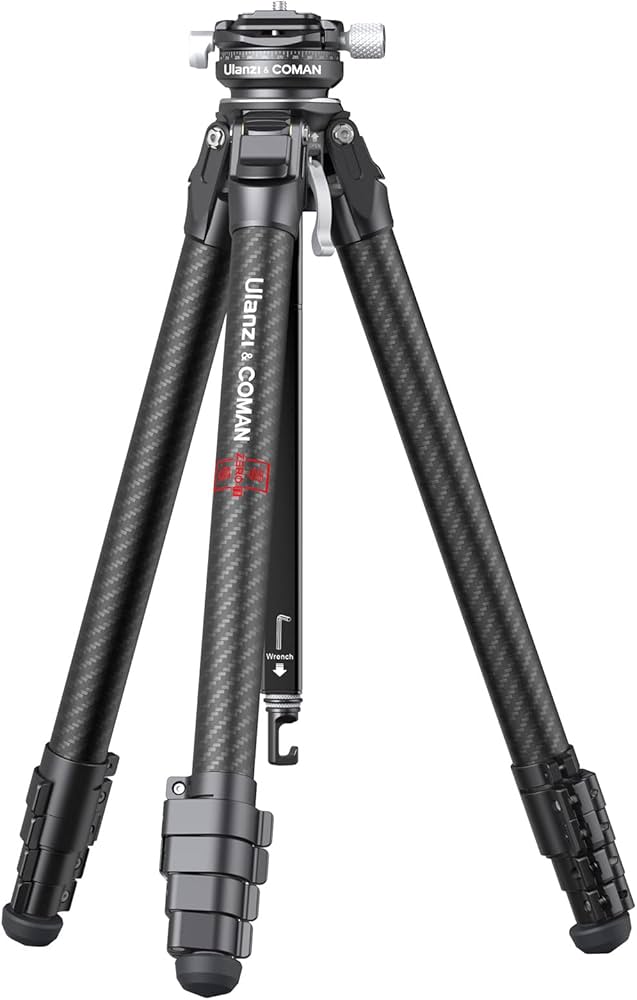
It is practically impossible to get good landscape photos without a tripod, and it has to be light yet robust enough for your camera (I’ve seen people breaking their cameras due to a weak tripod). I would say that for travel photography and long hikes, more than 1.5 kg would be excessive weight to carry. Again, this is about an equilibrium between weight, stability, endurance, and price.
Before I had the Vanguard VEO2 265CB for several years, but in 2024 I got the Ulanzi Zero Y Tripod which I couldn’t recommend more. It is easily portable and is a lightweight carbon fiber travel tripod. The kit only weighs 1.1 kg (2.4 lbs) and comes with a multi-action ball head and other adventages. The tripod can extend up to 157 cm and the legs fold with the center column similarly to the Peak Design tripod.
 Weight and portability Weight and portability |  Short for some shoots (150 cm max) Short for some shoots (150 cm max) |
 Price Price | |
 Multi-action ball kit Multi-action ball kit | |
 Cost Cost |
Ultra-wide lens – Sony FE 12-24mm F4 G
If you have a full-frame camera and like wide landscape photos, why not get an ultra-wide lens? The Sony FE 12-24mm F4 G is a lens to capture everything you want to frame. Weighing only 565g, this lens offers extremely sharp photos and creates a good portable combo with a7 cameras. Is 12mm noticeable vs a 16mm? Definitely yes. I shoot a lot between 12-18mm and I appreciate having the zoom versatility.
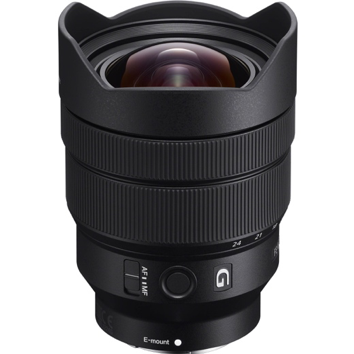
An important drawback for long exposure photos would be the bulbous glass, which doesn’t allow you to use conventional filters. This forces you to buy bigger filters like the 150mm NiSi or the 145mm Fotodiox. Also, if you want it for astrophotography, the F4 can be a problem for you. However, at the time I am writing this, the new Sony 12-24mm F2.8 GM has just been launched, solving this issue for $3,000 🥲
In this link you can find an extensive review about the lens.
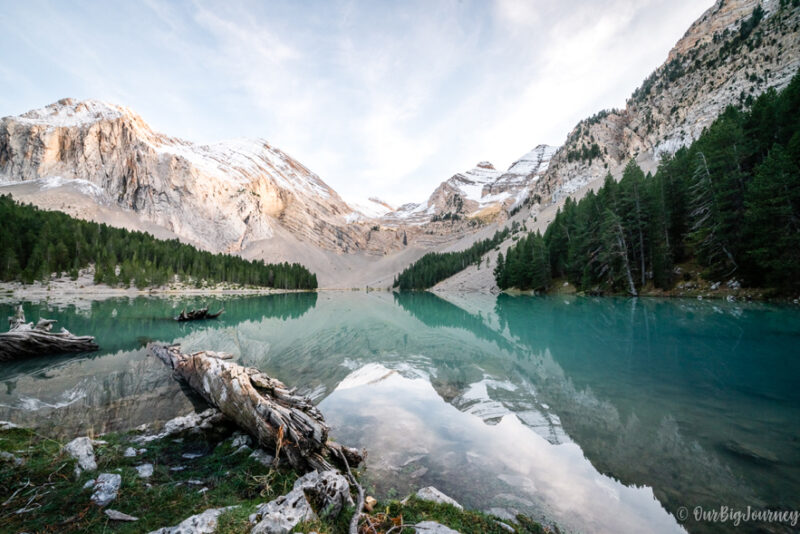
 Weight and portability Weight and portability |  Requires special filters Requires special filters |
 Excellent Image Quality Excellent Image Quality |  Not the best for astro/night photography (f/4) Not the best for astro/night photography (f/4) |
 Full-image sharpness Full-image sharpness |  Cost (around $1.700) Cost (around $1.700) |
 Low distortion for an Ultra-Wide Low distortion for an Ultra-Wide |
All in one lens – Sony 20-70mm F4 G
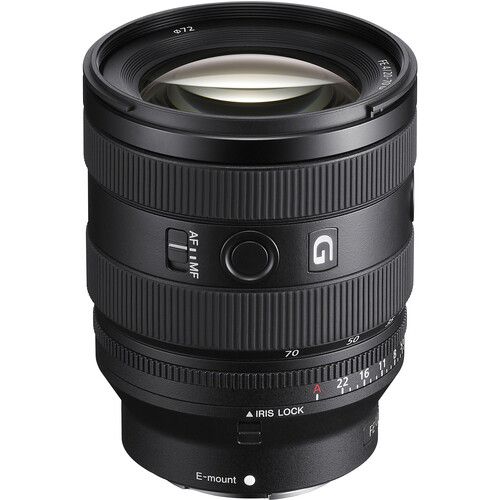
This is the last incorporation to my group of lenses. The Sony 20-70 F4 G covers a good focal range, from a pretty wide 20 mm to a mid range telephoto of 70 mm. This unique focal range is super useful when traveling, and the lens quality is really good. Size and weight (488 g) are exceptional and this has become my main lens. I’m planning a trip to Turkey, where this lens and the 85 f1.8 are going to be my only lenses.
 Weight and portability Weight and portability |  Not a 2.8 Not a 2.8 |
 Excellent Image Quality Excellent Image Quality |  Cost (around 1.300 €) Cost (around 1.300 €) |
 Focal range Focal range |
Mid-range lens – Tamron 28-75mm F2.8 Di III RXD
When this lens was first released, it was sold out for several weeks worldwide due to its versatility and the quality/cost. It is the lens I use for my all-around photos and it used to be attached to my camera 70% of the time before having the 20-70. If I want a wider shot, I use the Sony 12-24mm. I am still amazed by the Tamron lens’ sharpness and I recommend it as a principal travel lens. It also works well in low light and usually, portraits have usually a decent bokeh.
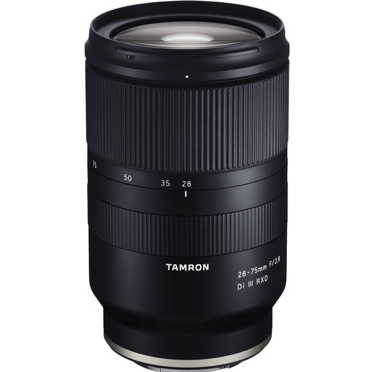
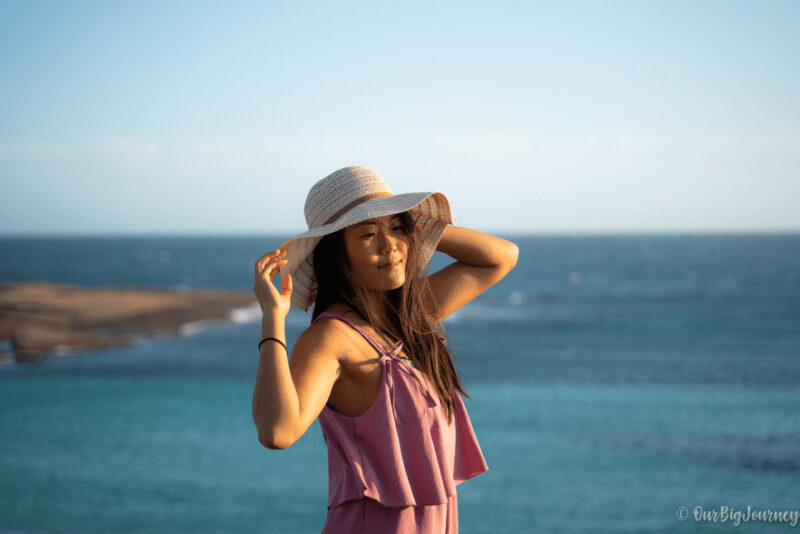
While the lens is mainly made from plastic, the feeling is good. For less than $900 you can get this fast, silent, and compact lens, which only weighs 550g. I absolutely recommend it. In case you want more info, check a complete review here.
 Great Image Quality Great Image Quality |  No real wide-angle No real wide-angle |
 Excellent quality/cost Excellent quality/cost |  Bad hood coupling system Bad hood coupling system |
 Lightweight and Portable Lightweight and Portable | |
 Fast and silent Fast and silent |
Portrait lens – Sony 85mm f1.8

Affordable, excellent quality/price balance and smooth bokeh. What else? Light and portable! The Sony 85 f 1.8 is clearly an underrated lens. With the only downside of a not super fast AF, this lens is a must for portraits.
 Great Image Quality Great Image Quality |  AF could be better AF could be better |
 Excellent quality/cost Excellent quality/cost | |
 Lightweight and Portable Lightweight and Portable |
Telephoto lens – Tamron 70-300mm F/4.5-6.3 Di III RXD
To close the trinomial of lenses, I recently purchased the Tamron 70-300mm F/4.5-6.3 Di III RXD (or just Tamron 70-300) due to its low price, decent sharpness and weight. I missed having a telephoto when hiking and when the Tamron 70-300 appeared I put an eye on this lens. It’s only 545 grams and quite “small” for a telephoto lens. I’m just starting to use it, but let’s see what we can get in future trips.
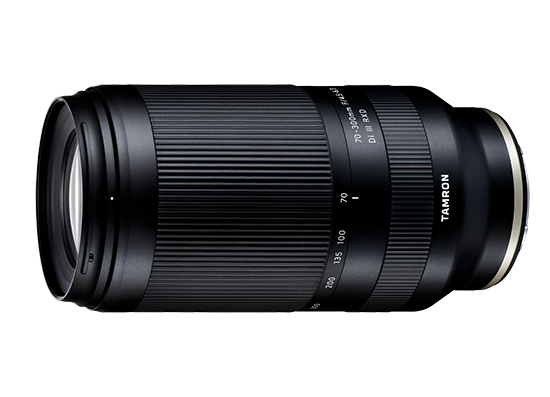
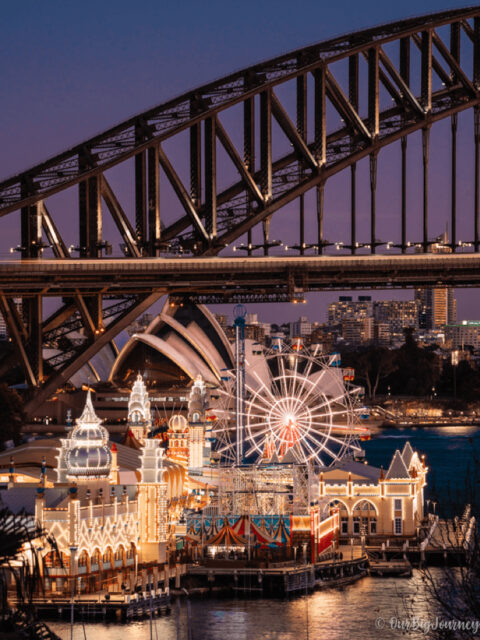
 Sharp & Good IQ Sharp & Good IQ |  Bokeh could be better Bokeh could be better |
 Affordable Affordable |  No Image Stabilisation No Image Stabilisation |
 Lightweight Lightweight |  Prone to lens creep Prone to lens creep |
Drone for Travel Photography – DJI Mini 2
I first owned a DJI Spark and I sold it to get the Mavic Mini. It was a big improvement with more than 25 min of flying time per battery and it was ridiculously small and portable, something I loved. After months of flying it in Australia, I felt I needed something with a more reliable connection and able to shoot RAW photography. DJI Mini 2 appeared, bringing this two needs for me, and finally sold the Mavic Mini to buy the Mini 2.
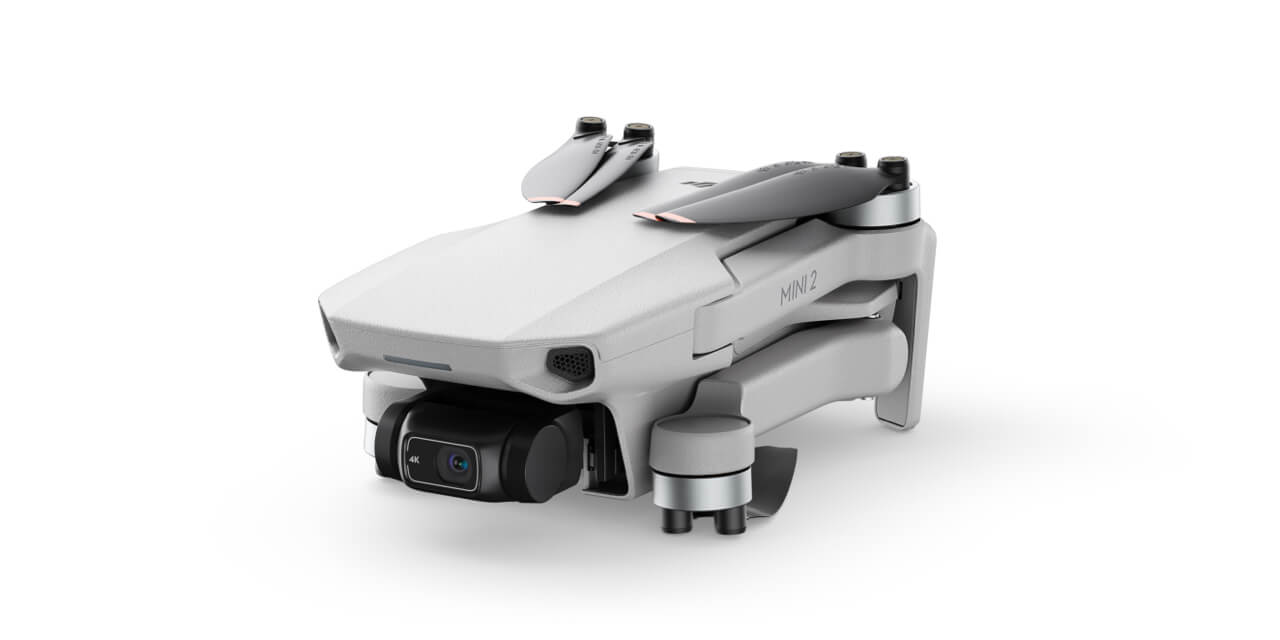
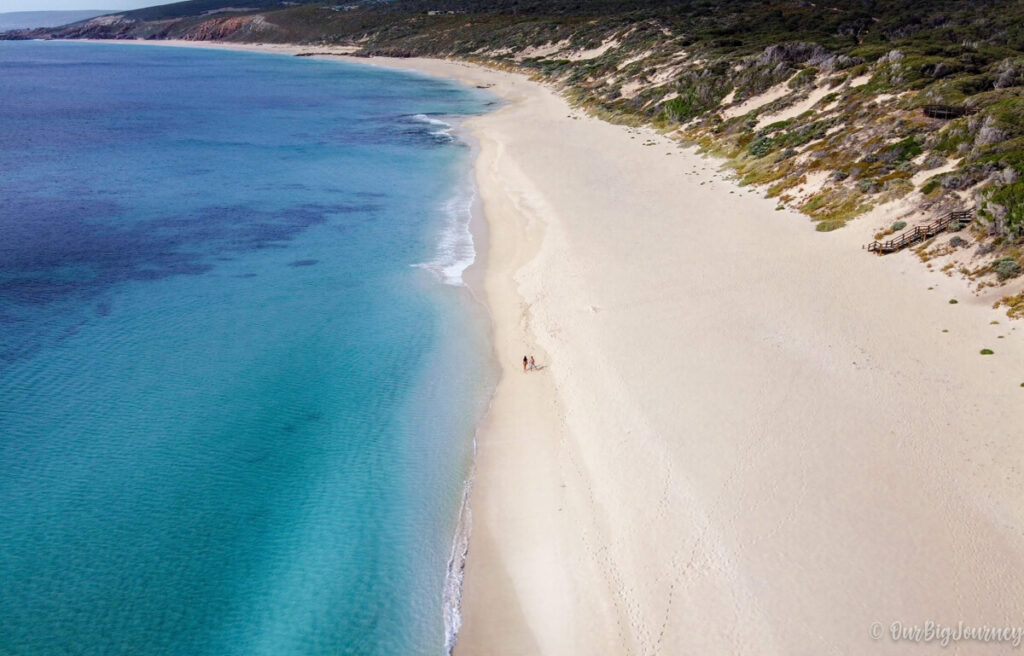
The Mini 2 is easy to carry and pack in a backpack. Its control is reliable and the stability is outstanding. I can say that the new controller with OcuSync 2.0 really makes a difference. The video quality of the Mini 2 is now 4K, compared to the Mini 1 that was 2.7K.
In addition, the new RAW format and 12 MP offers me enough quality for the photos I want. This is why I would definitely recommend it as a first drone (be careful with obstacles) or as a travel drone. If your aerial videos need more quality or versatility, go then for superior models like the Air 2S / Mini 3 Pro or the recent Mini 3.
 Lightweight and Portable Lightweight and Portable |  Few shooting modes Few shooting modes |
 Flying time Flying time |  Lacks obstacle sensors Lacks obstacle sensors |
 RAW and 4K RAW and 4K | |
 Great quality/cost Great quality/cost | |
 Easy and fast to fly Easy and fast to fly | |
 3-axis stabilization 3-axis stabilization |
Backpacks for travel photography gear
Urban / Short Hike Backpack – WANDRD Duo Day Pack
I bought this backpack on Kickstarter for $150 when WANDRD was raising money for its development, and now you can purchase it on WANDRD’s website for $219. It is the best (daily) camera bag I have ever had. Ever. The 21 L size is perfect for every-day use. The multi-pocket system protects lenses, your laptop, mouse, chargers, or wires. It also has an expandable space for protecting the camera or lenses, which is perfect for long trips or just for keeping everything safe on a flight. Also, it has a double zipper system to reach items wherever, it is water-resistant (I have tested it under light and heavy rain), and the straps are fully adjustable.
👉🏼 Find here the FULL WANDRD Duo Daypack review after 20 months of use
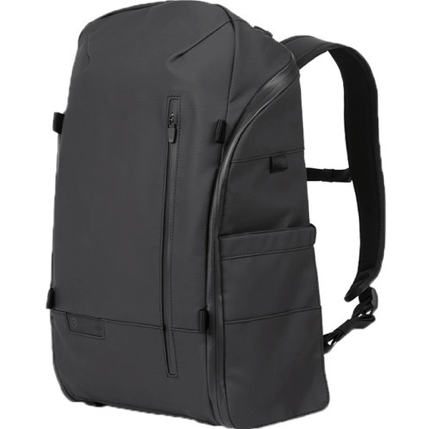
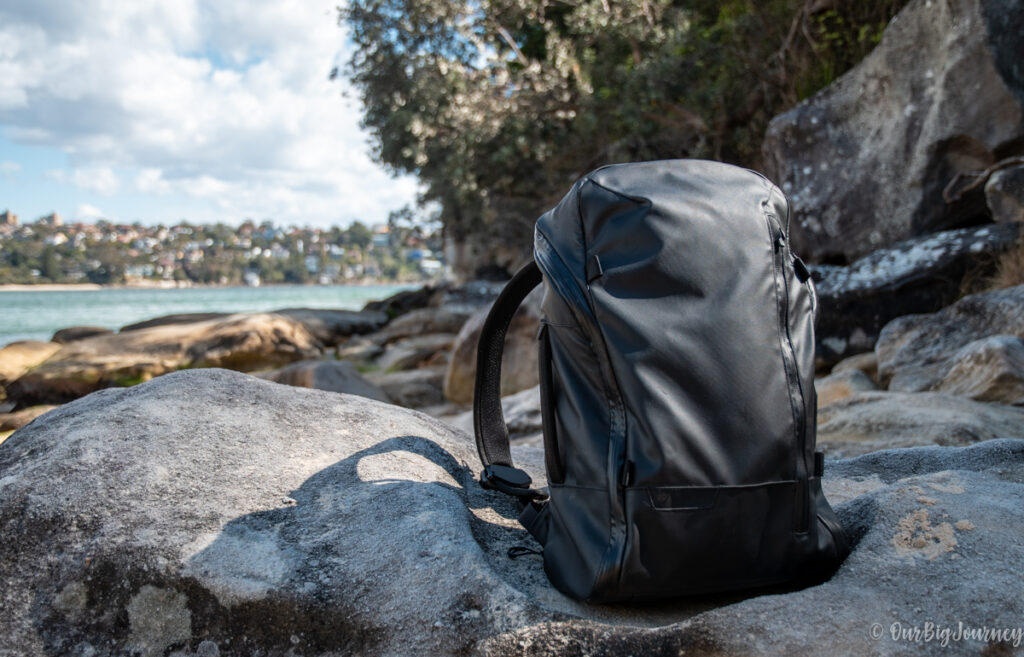
 Weight and size Weight and size |  The zippers can be tricky The zippers can be tricky |
 Compartments and accessibility Compartments and accessibility | |
 Comfort Comfort | |
 Materials Materials | |
 Water resistant Water resistant |
Long Hike Backpacks – Shimoda Explore V2 30 L
Shimoda Explore V2 30 L
When the Shimoda Explore V2 appeared in Kickstarter, I fell in love with it. It was exactly what I was looking for: water resistant, wide waist straps, superb materials, customisable with units and pockets… And many more details.
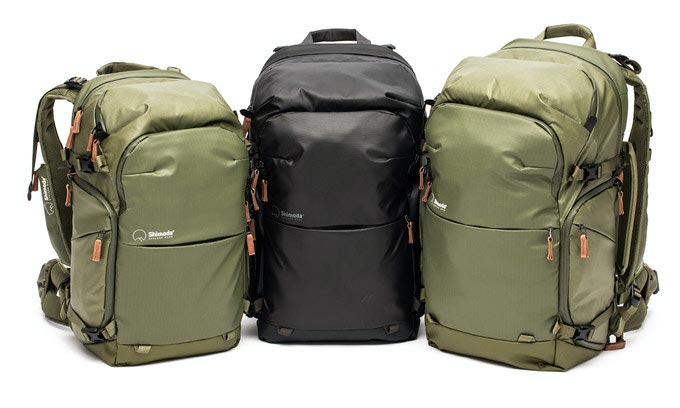
There is a video with the review and more comments in the best backpacks for hiking post. I’d say I really like everything in this backpack, from the materials to the comfort.
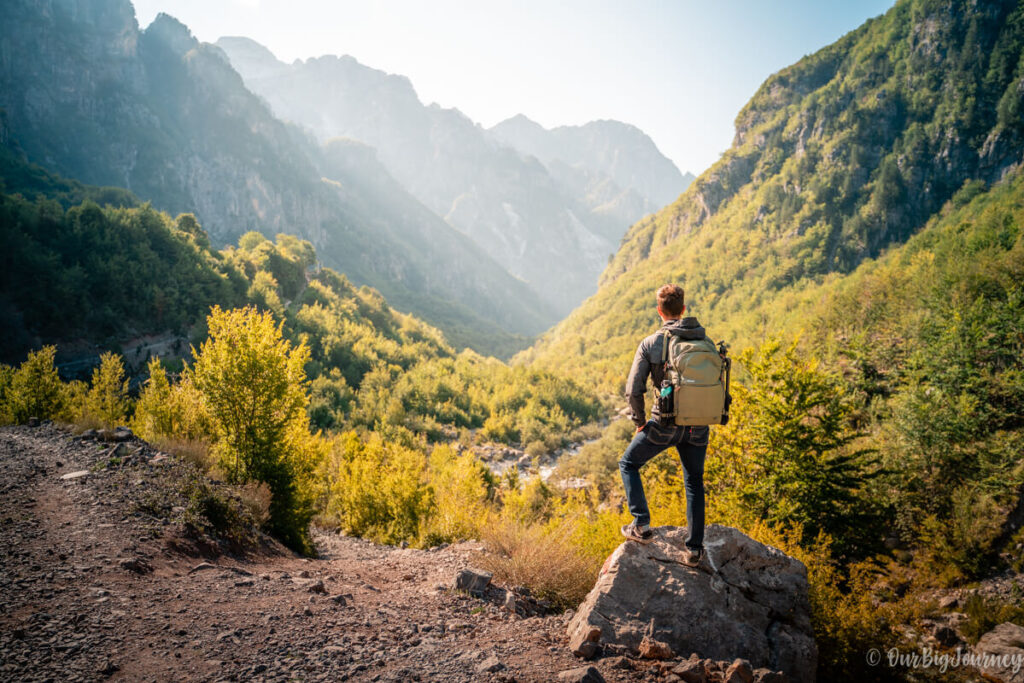
 Comfort Comfort |  Vey Expensive Vey Expensive |
 Compartments / expandable side pockets Compartments / expandable side pockets | |
 Aesthetics and Materials Aesthetics and Materials | |
 Water resistant and rain cover Water resistant and rain cover | |
 Millimetrically designed Millimetrically designed | |
Vanguard Havana 48
Before having the Shimoda backpack, I got the Vanguard Havana 48 backpack in 2017 when I was starting photography as a hobby. Since then, it has been with me on many hikes and to many countries.
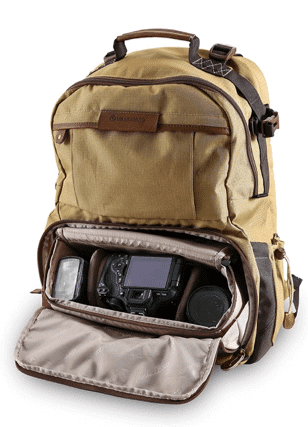
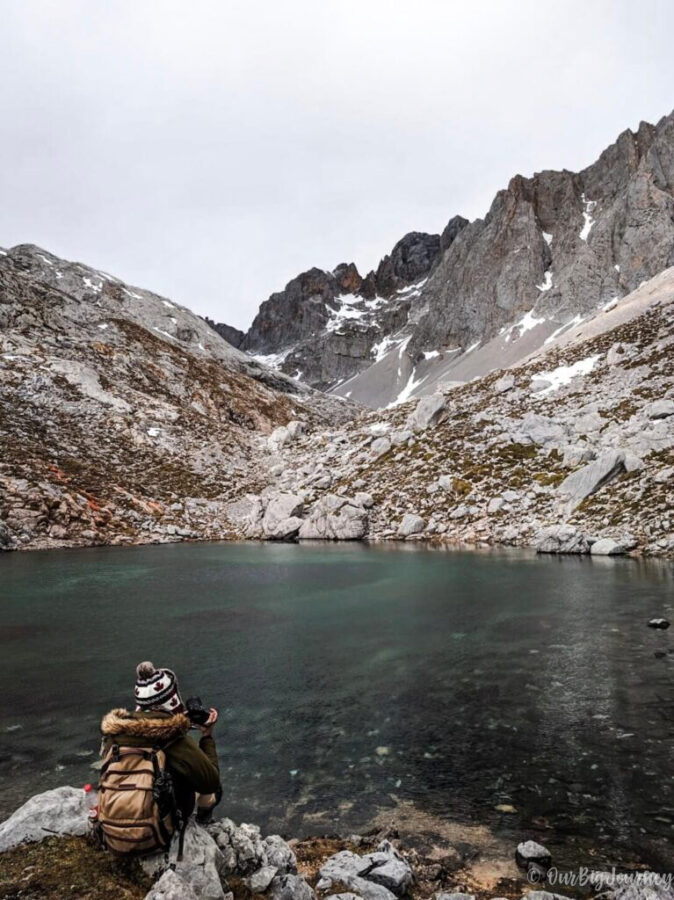
Camera Carry – Peak Design Capture V3 Camera Clip
I don’t know how many times I’ve said to Ellie, “this is the best invention ever!” After trying neck-straps, shoulder bags, and having the camera in the bag, I found this useful but not-so-cheap ($70) gadget from Peak Design. It is one of the best additions to my travel photography gear.
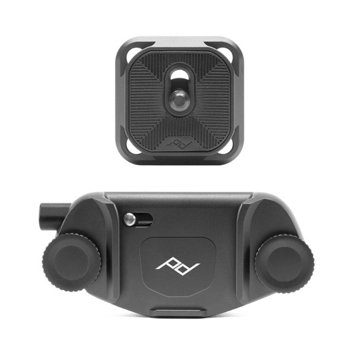
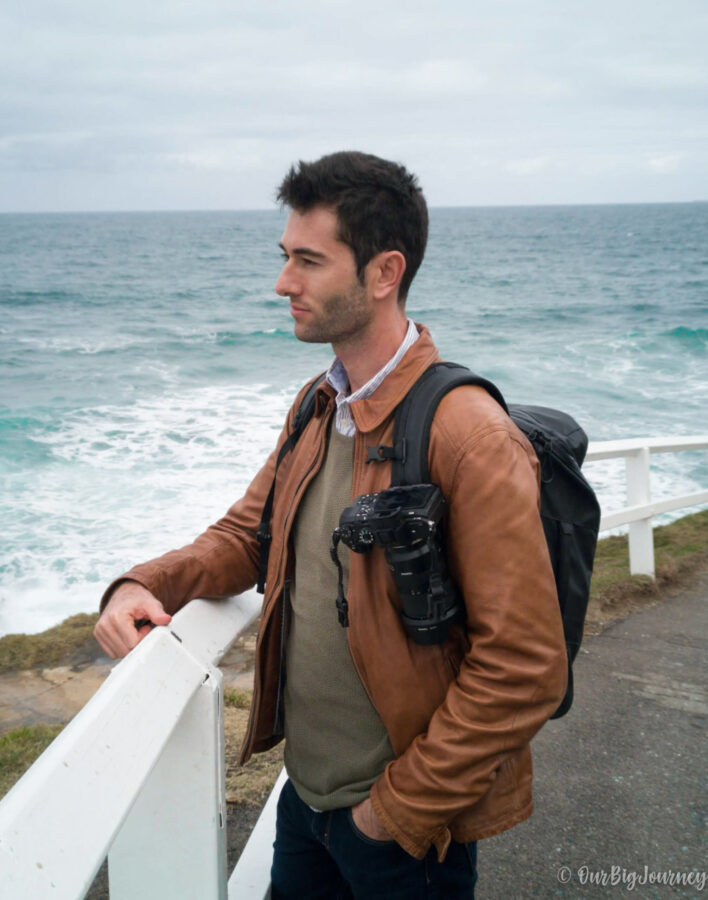
This clip firmly holds your camera to your bag strap, allowing you to easily grab it and shoot in less than 3 seconds. It is much faster than having your camera in the backpack or a shoulder bag, and it also leaves more space in your bag. One piece of advice is to put your tripod or water bottle on the opposite side you have the camera, in order to disperse the weight evenly on each side of your body.
 Space and time saving Space and time saving |  Price Price |
 Easy to use Easy to use |  It does not fit with some lenses/adapters It does not fit with some lenses/adapters |
Cleaning Kit – Movo Deluxe Essentials DSLR Cleaning Kit
This kind of kits provides you all the components you need to take care of your camera, lenses, and sensor. There are many in the market, they are quite cheap ($20-60) and usually come with an air blower, sensor swab, cleaning brush, microfibre cloth, lens pen, and more.
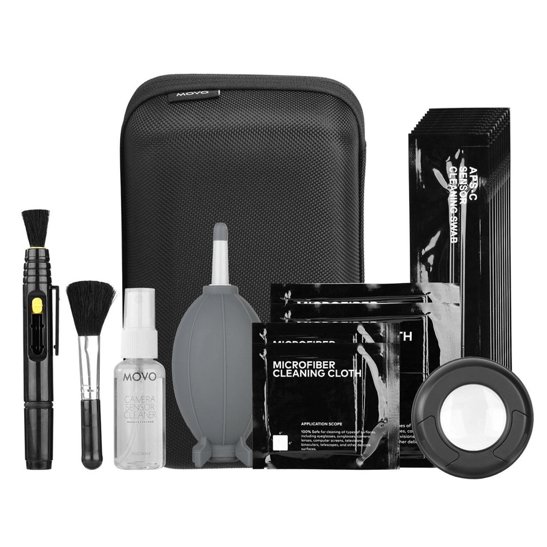
 Cheap and useful Cheap and useful |  Another gadget to carry Another gadget to carry |
Other equipment that I’ve had in the past
- Samyang 14 mm f2.8
- Sony 50 mm f1.8
- Tripod – Vanguard VEO2 265CB
This is all my travel photography gear at the moment. As I said before, the equipment changes continuously, just like our interests, styles, budget, or preferences. I have friends who are masters with only two prime lenses, others who always use a 16-35mm, and others who prefer mid or long-range lenses for everything.
My recommendation would be to think about what you really want to do, what inspires you, and what photo style you enjoy the most. Don’t waste your money in many primes or 2.8 lens you are not carrying with you on almost every hike. Instead, buy a trip to discover a new country or buy the backpack you love to carry your motivation everywhere.
Further reading…
New to the world of photography or looking for tips to elevate your photos?
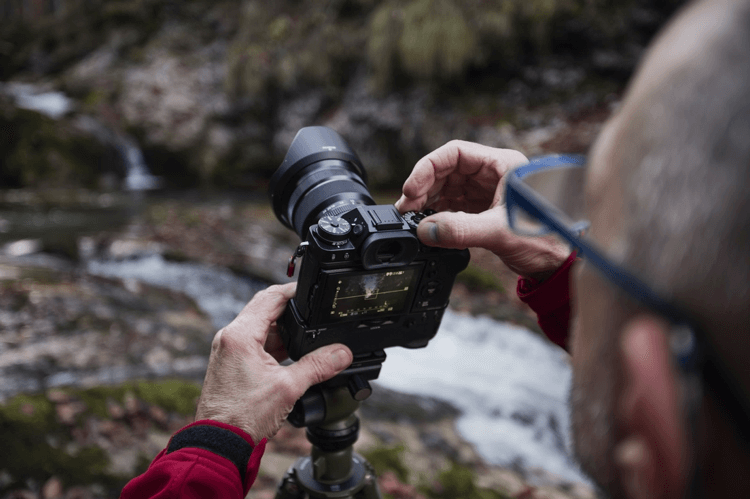
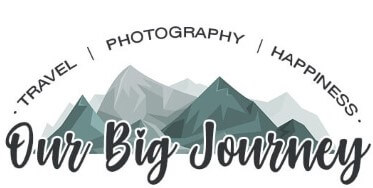
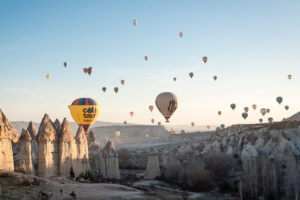

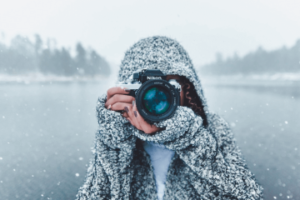
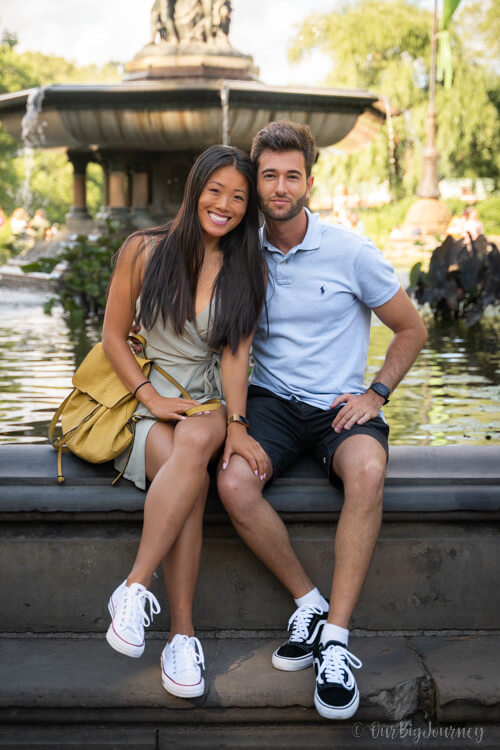

1 Comment
Leave your reply.